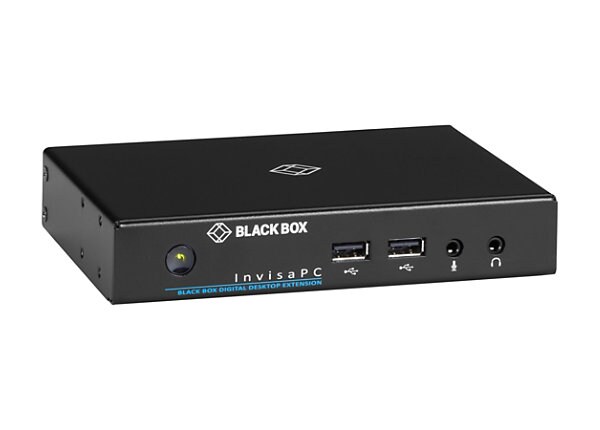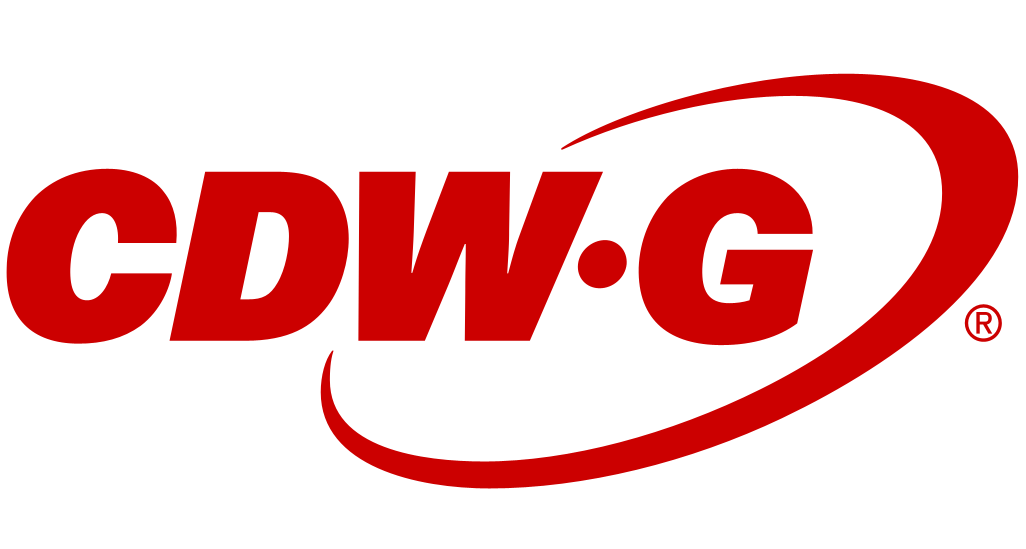
Know your gear
With the InvisaPC solution, computers are removed from the desktop and are relocated within a secure, climate-controlled equipment room, and connected to an InvisaPC transmitter. Each user has his/her own keyboard, monitor, mouse, and peripheral setup connected to an InvisaPC receiver. The receiver delivers a high performance, real-time user experience, just as if the user was sitting right in front of a physical computer with direct input.
The clients and the back-racked servers are connected via standard LAN or WAN infrastructure. The bandwidth requirements of the system are very low. For example, with the InvisaPC, transmitting a 1080p movie only requires 40 Mbps bandwidth and, it can use as low as a few Kbps when idle. The low bandwidth requirements enable extension over the Internet with very low latency and sharing over corporate networks.
The InvisaPC bridges the gap between IP-based KVM extension and switching applications and access to virtual machines. Use an InvisaPC receiver as a direct portal to virtual machines, especially Microsoft RDP 7.1 and RDP 8, to redirect digital video, USB keyboard and mouse, and audio to distant users over IP.
The InvisaPC requires a host server with an operating system and associated Client Access Licenses (CALs). However, the InvisaPC doesn't require any drivers or software to be installed on computers. This hardware-based solution is plug-and-play, directly connecting to the network interface right out of the box.
The InvisaPC solution provides the ability of a smooth migration from real desktops towards a virtual pool of servers. The system provides integrated support for back-racked PCs and virtual desktops. In particular, the design addresses applications with a mix of both worlds without changing the front end for the user. Desktop virtualization is deployed through a PC or server that hosts multiple virtual desktops. The workstations can be running Mac, Linux, or Microsoft operating systems using an InvisaPC transmitter. Using an InvisaPC transmitter, the system supports digital video, audio, USB and serial peripheral extension across IP networks.
Connected to a virtual machine, one InvisaPC receiver can support up to 32 RDP, RDP 7.1/8 targets. The same receiver can also be connected with up to a total of 32 InvisaPC transmitters/servers. That way each InvisaPC receiver supports switching between a total of 32 soft and hard targets. The setting can be copied from on receiver to another to simplify setup and user profiles may be configured on the receiver to restrict targets. Multiple receivers may be used to create a matrix switch via the network, too, without any management requirements, although management is supported.
InvisaPC can easily be adapted to meet your requirements. Start with a small switching system that enables one user access to different computers and virtual machines. Gradually, the system can be expanded into a switching matrix. Management software will also enable larger switching matrices, as well as integration into existing network authentication systems such as LDAP or Active Directory. For managed matrix solutions, use the InvisaPC manager and licenses (DTX1032-R). Software licenses are available for 100 users (DTX1032-LIC100) and 250 users (DTX1032-LIC250).
The clients and the back-racked servers are connected via standard LAN or WAN infrastructure. The bandwidth requirements of the system are very low. For example, with the InvisaPC, transmitting a 1080p movie only requires 40 Mbps bandwidth and, it can use as low as a few Kbps when idle. The low bandwidth requirements enable extension over the Internet with very low latency and sharing over corporate networks.
The InvisaPC bridges the gap between IP-based KVM extension and switching applications and access to virtual machines. Use an InvisaPC receiver as a direct portal to virtual machines, especially Microsoft RDP 7.1 and RDP 8, to redirect digital video, USB keyboard and mouse, and audio to distant users over IP.
The InvisaPC requires a host server with an operating system and associated Client Access Licenses (CALs). However, the InvisaPC doesn't require any drivers or software to be installed on computers. This hardware-based solution is plug-and-play, directly connecting to the network interface right out of the box.
The InvisaPC solution provides the ability of a smooth migration from real desktops towards a virtual pool of servers. The system provides integrated support for back-racked PCs and virtual desktops. In particular, the design addresses applications with a mix of both worlds without changing the front end for the user. Desktop virtualization is deployed through a PC or server that hosts multiple virtual desktops. The workstations can be running Mac, Linux, or Microsoft operating systems using an InvisaPC transmitter. Using an InvisaPC transmitter, the system supports digital video, audio, USB and serial peripheral extension across IP networks.
Connected to a virtual machine, one InvisaPC receiver can support up to 32 RDP, RDP 7.1/8 targets. The same receiver can also be connected with up to a total of 32 InvisaPC transmitters/servers. That way each InvisaPC receiver supports switching between a total of 32 soft and hard targets. The setting can be copied from on receiver to another to simplify setup and user profiles may be configured on the receiver to restrict targets. Multiple receivers may be used to create a matrix switch via the network, too, without any management requirements, although management is supported.
InvisaPC can easily be adapted to meet your requirements. Start with a small switching system that enables one user access to different computers and virtual machines. Gradually, the system can be expanded into a switching matrix. Management software will also enable larger switching matrices, as well as integration into existing network authentication systems such as LDAP or Active Directory. For managed matrix solutions, use the InvisaPC manager and licenses (DTX1032-R). Software licenses are available for 100 users (DTX1032-LIC100) and 250 users (DTX1032-LIC250).
